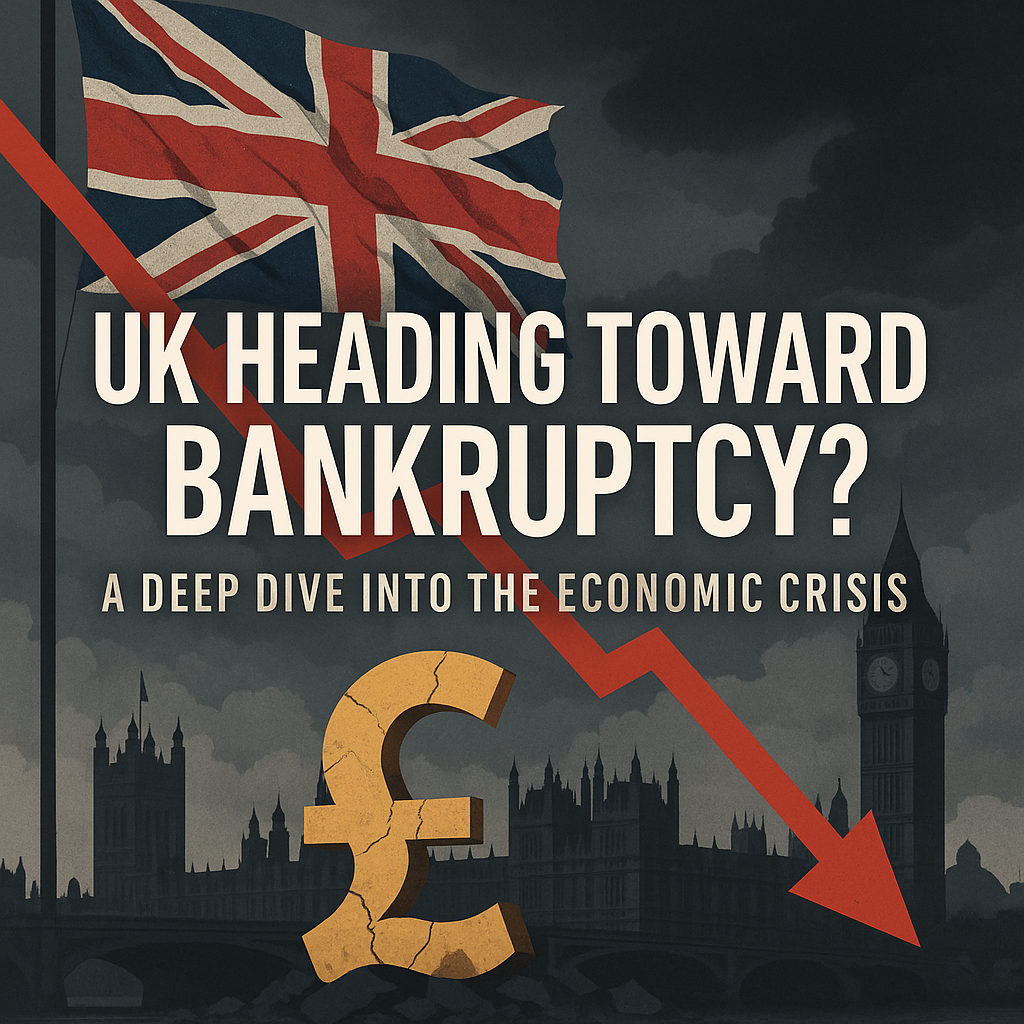
📉 Introduction
The term “bankruptcy” might sound dramatic when describing a nation like the UK—but it’s not far off the mark in spirit. The United Kingdom, long seen as a stable global financial hub, is now grappling with a dangerous convergence of economic pressures: ballooning debt, weak growth, political chaos, and declining global confidence. So, how did one of the world’s most influential economies end up teetering on the edge? Let’s break it down.
🔍 1. The Roots of the Crisis
Ballooning Public Debt
The UK’s debt-to-GDP ratio has soared, driven by:
- Massive pandemic-era stimulus
- Energy bill support packages
- Unfunded tax cuts
This borrowing spree has created long-term fiscal liabilities that threaten future stability.
Out-of-Control Spending
Healthcare, welfare, defence—these critical sectors are guzzling government funds. The problem? Tax revenues aren’t keeping up, leading to a widening budget deficit.
Weak Economic Growth
- Post-Brexit friction with EU trade partners has hit exports and investment.
- Inflation is crippling consumer demand and business confidence.
- Long-term productivity growth remains alarmingly low.
Political Instability
From Boris Johnson to Liz Truss to Rishi Sunak, the UK has seen revolving-door leadership. Each transition brought inconsistent economic policies, undermining investor confidence and spooking markets.
⚙️ 2. Economic Mechanisms Driving the Decline
Rising Interest Costs
As global interest rates climb, so does the cost of servicing debt. This squeezes the UK’s budget even further, reducing funds for development or crisis response.
Crowding Out Effect
The more the government borrows, the more it competes with the private sector for funds—dampening private investment and long-term growth potential.
Currency Devaluation
The British pound has weakened, making imports more expensive and fueling inflation. It also discourages foreign investment, further pressuring the economy.
⚠️ 3. Is the UK Going Bankrupt?
Technically, countries don’t go bankrupt like individuals do—but they can default or face market collapse. If:
- Confidence erodes
- Bond yields spike
- Credit ratings fall
… the UK may struggle to borrow affordably, leading to fiscal paralysis and a possible crisis.
🛠️ 4. Can the UK Avoid a Financial Collapse?
Yes—but only with bold and immediate reform. Here’s how:
✅ Fiscal Discipline
- Set sustainable budgets
- Cut unnecessary spending
- Rebuild trust in UK debt markets
✅ Boosting Growth
- Invest in infrastructure and innovation
- Improve trade partnerships
- Encourage domestic investment and entrepreneurship
✅ Political Stability
- A unified long-term economic vision is crucial
- Rebuild credibility through transparent governance
🎯 Final Takeaway
The UK stands at a critical economic crossroads. Without urgent reforms and consistent leadership, it risks spiralling into a self-inflicted economic disaster. The nation still has the tools and talent to recover, but the clock is ticking.
💡 Bonus Tips for Enhancing the Blog (If Publishing)
- Visual Aids: Add graphs showing UK debt-to-GDP trends, inflation spikes, and currency fluctuations.
- Pull Quotes: Highlight impactful lines like “With more borrowed, more borrowed will come”.
- Engaging Headings: Use emotional language—“Rising Interest, Falling Confidence” or “Broken Promises, Broken Budgets.”
- SEO Keywords: Include terms like
UK economic crisis,UK debt problem,Britain recession,is UK going bankrupt.
